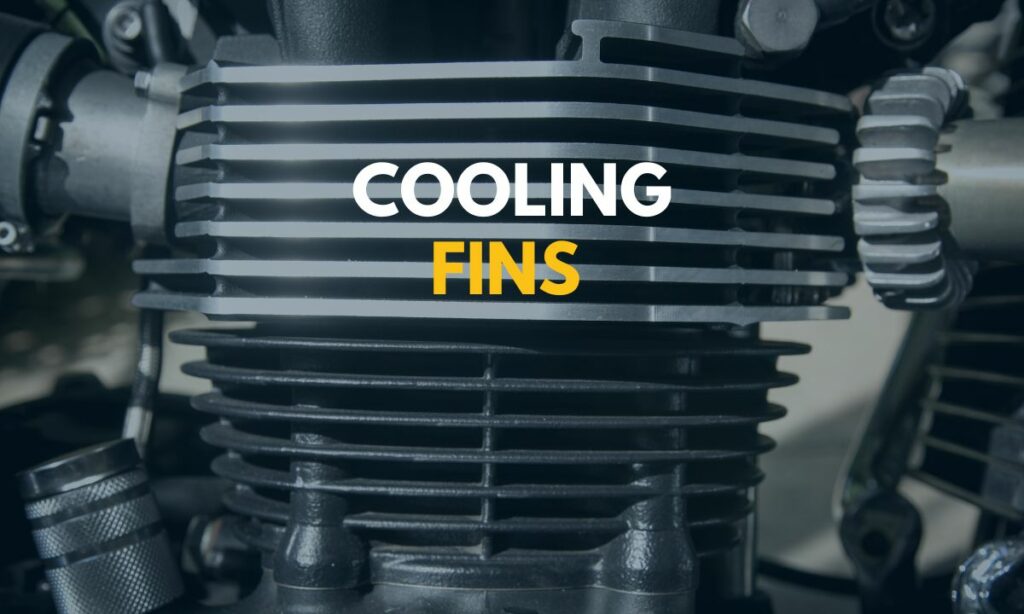You might have noticed these thin protrusions surrounding the engine’s outer part on motorcycles.
They are called engine fins.
And they have a purpose.
So why do motorcycle engines have fins?
Fins on the motorcycle engine cool down the engine by speeding up the heat dissipation process.
For motorcycles with air cooling systems, the heat generated in the engine is dissipated through air circulation. Attaching fins to the engine casing increases the surface area over which the air passes.
This, in turn, speeds up the heat dissipation and cools down the engine faster.
And that’s why even liquid-cooled engines have fins since they speed up engine cooling through natural air circulation.
If you want to deep dive into how fins cool down the engine, let’s dive right into it.
What Are Engine Fins?
Fins are thin extrusions or appendages attached to a larger structure or a component. In this case, the engine.
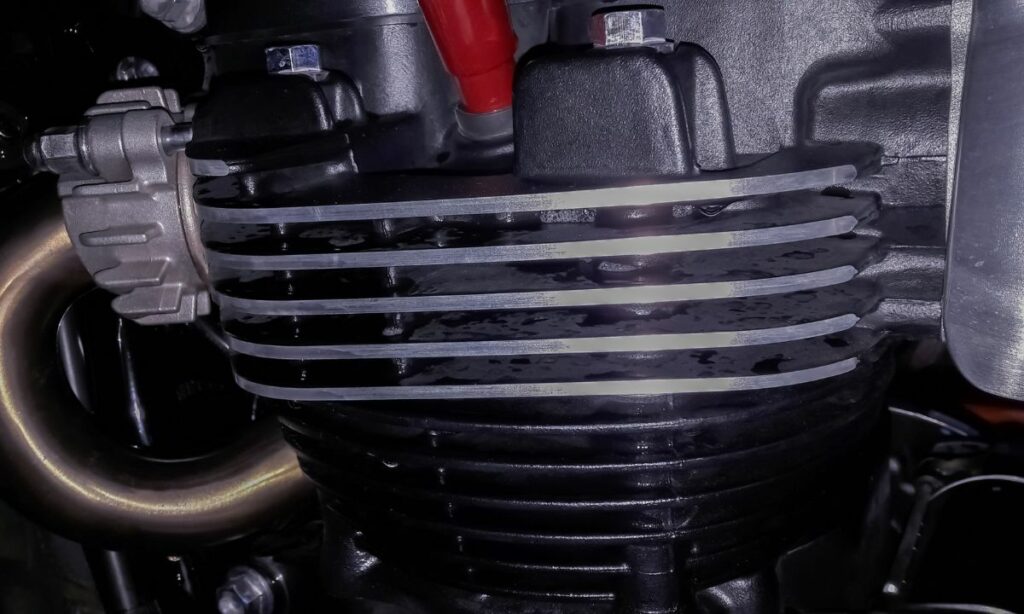
Normally, fins are used for either of two purposes –
i) to produce lift or thirst, or
ii) to increase surface area to accelerate heat transfer.
The usage of fins to produce lift and thirst can best be seen in a fish.
The fins act as locomotive organs and produce thrust and lift to generate motion in the water.
Another popular use of fins to produce lift and thrust is in turbines and propellers.
Here, these components use rotating fins, also called foils or blades, to generate rotating motion.
Now, the other usage.
Fins are also used to increase the surface area to accelerate heat transfer. So that the body can cool faster.
This attribute of fins is what we see in motorcycle engines.
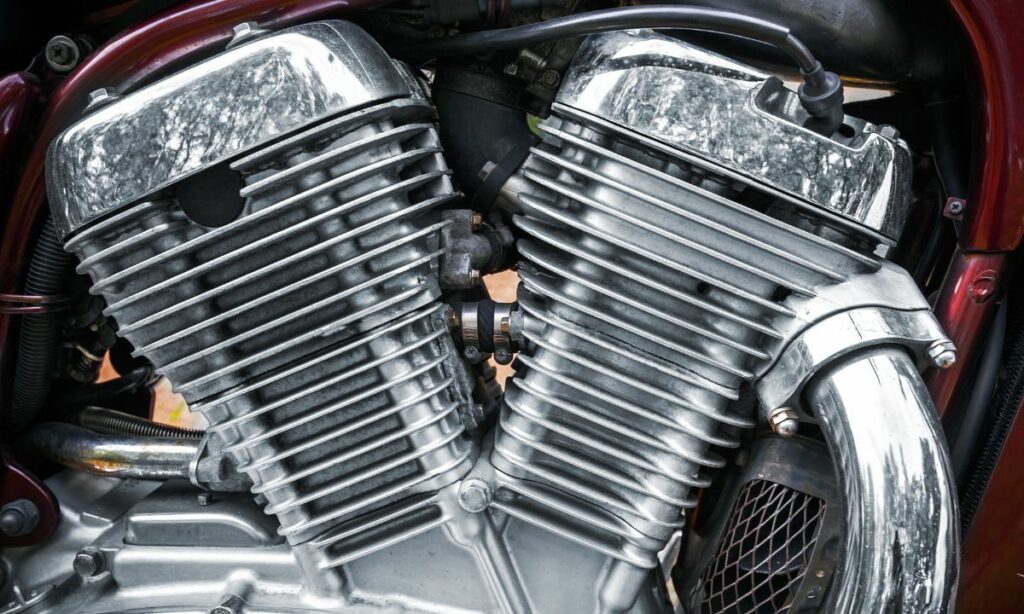
The fins in motorcycle engines are used to dissipate the heat generated and cool down the engine.
Fins provide a larger surface area over which the air can circulate and take away the heat.
Helpful read: Cleaning motorcycle engine fins
Why Motorcycle Engines Need Fins
In a motorcycle engine, the air-fuel mixture gets combusted and produces the energy required for the functioning of the motorcycle.
Along with that, heat is also generated in the combustion chamber.
As a result, the temperature in the combustion chamber increases rapidly.
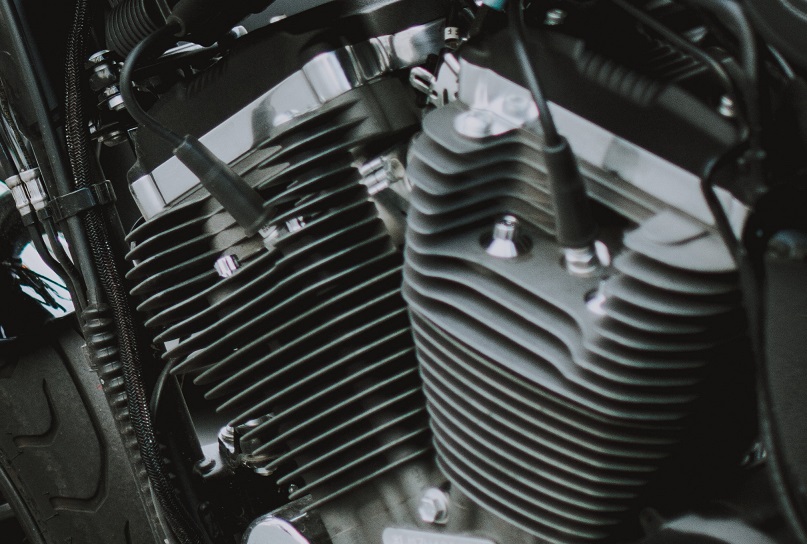
Now, for the engine to function smoothly and to last longer, the temperature needs to be brought down to lower levels.
The heat generated needs to dissipate as fast as possible.
If at all, the heat is not dissipated, the effects on the engine can include overheating, knocking, misfiring, pre-ignition, etc.
Even the piston rings, cylinder walls, and engine valves could be damaged.
In order to dissipate the heat generated and bring down the temperature, motorcycles have cooling systems.
There are mainly 2 types of cooling systems used.
- Air cooling system
- Liquid cooling system
While a liquid cooling system is the most effective one and is used in most modern motorcycles, air-cooled systems can still be seen in numerous motorcycle models.
Air cooling is usually found in older motorcycles or motorcycles with lower-capacity engines.
And in the modern but purposefully retro and carbureted motorcycles.
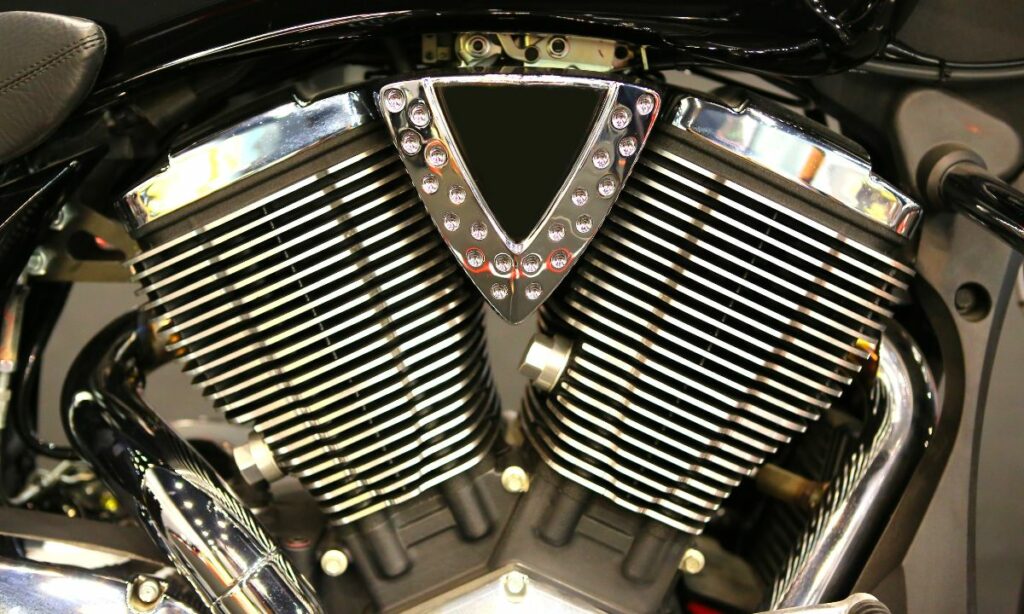
The basic premise here is to allow the air circulation to take away the heat generated by the engine.
The heat needs to be transferred from the engine to the air.
To expedite this heat transfer, manufacturers use ‘cooling fins’ on the engine casing.
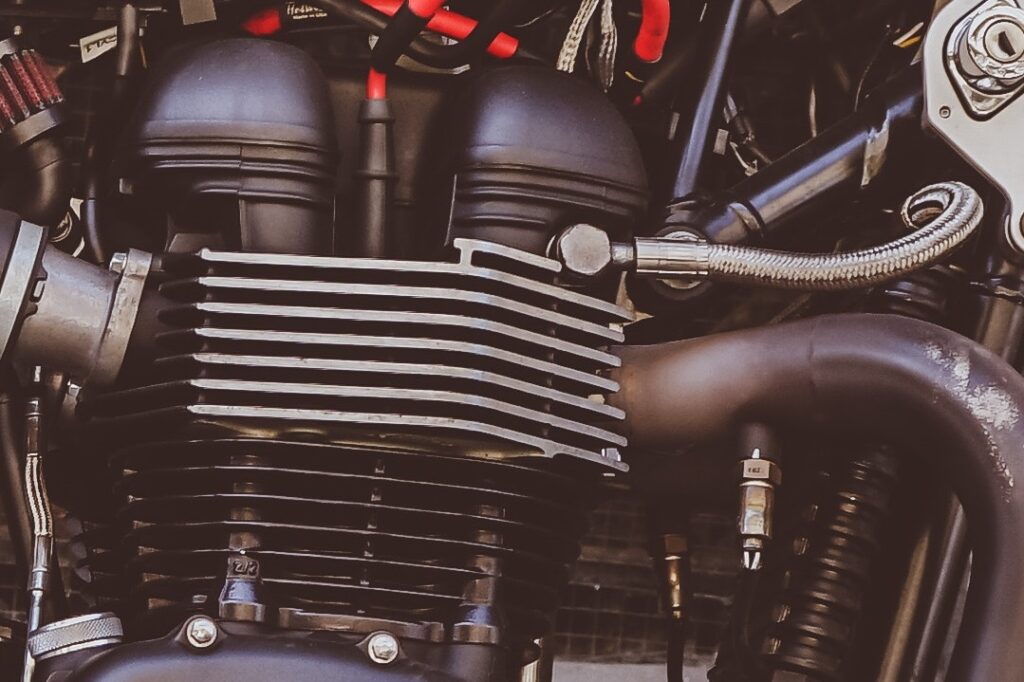
The purpose of these fins is to conduct the heat generated from the engine and transfer it to the air passing over them.
The increased surface area will make the heat transfer faster.
Now, how the heat transfer is made faster and the cooling is improved is explained in the below section.
How Do Fins Help Engine Cooling?
We know that air-cooled engines have fins attached to the engine casing.
But, how exactly do these fins help in the heat transfer process?
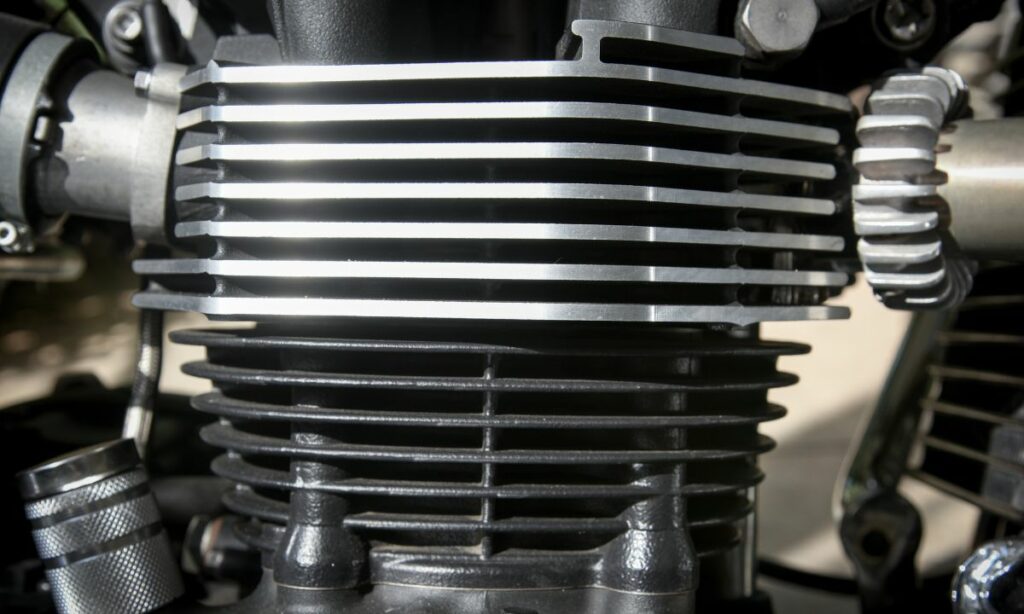
In order to understand this phenomenon, we have to dig deeper into the heat transfer process.
Here, the heat transfer takes place from the engine case to the air. That is, from a solid boundary to a fluid.
This type of heat transfer, where the transfer is due to bulk fluid motion along the surface of a solid boundary, is called convection heat transfer.
Newton had determined the rate of heat transfer due to convection and the equation for the heat transfer is given by:
Q = h * A * (Ts – Tf)
where –
Q: Heat Transfer per unit time in Watts (W)
A: Surface Area in Square Meters (sq. m)
Ts: Temperature of the Solid Boundary in Kelvin (K)
Tf: Temperature of the fluid in Kelvin (K)
h: Heat Transfer co-efficient of the fluid (W/m2K)
So, the larger the surface area – the higher the heat transfer.
The surface area of the boundary layer is proportional to the amount of heat transfer.
In order to increase the heat transfer rate from the engine, manufacturers add fins to the engine casing.
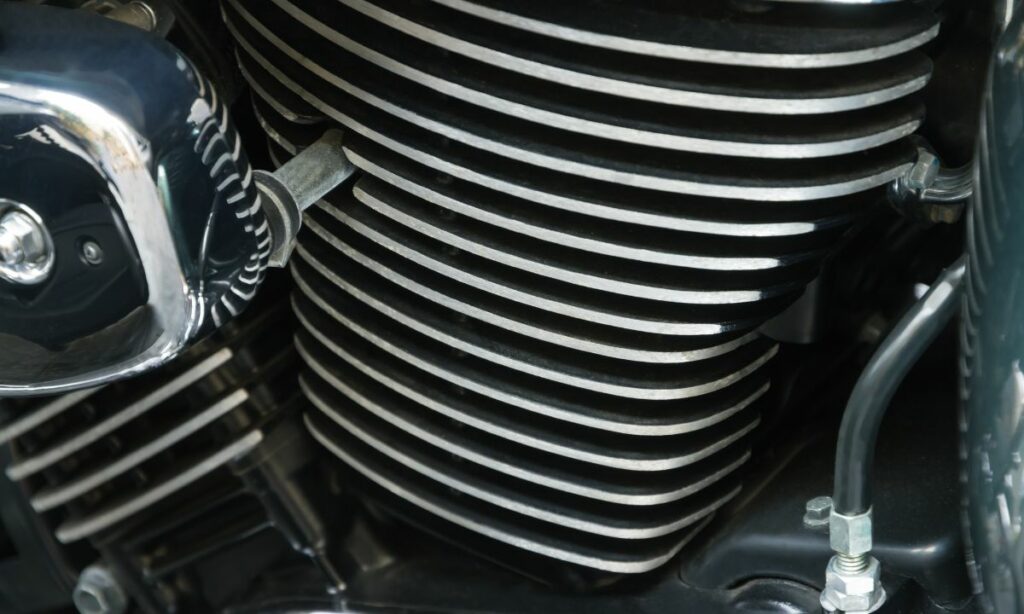
These fins conduct the heat from the engine to their surfaces. With the increase in the surface area, the heat transfer process is enhanced.
As a result, the dissipation of heat is much faster with fins than without fins on the engine.
That’s why you should clean the fins as well if there is lots of dirt and grease accumulated – to prevent engine overheating.
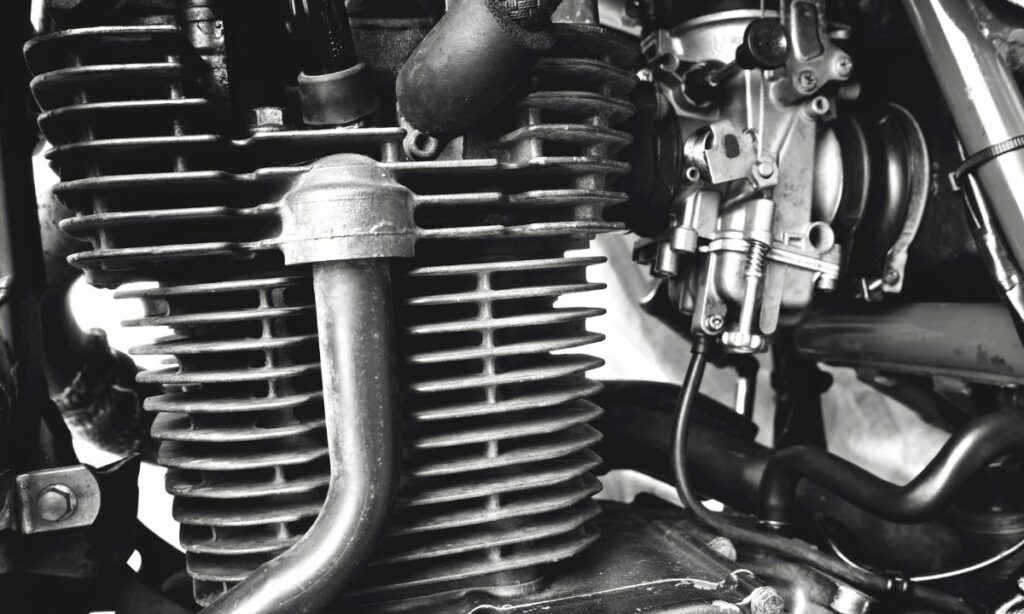
For these reasons, Fins play a huge role in cooling the engine and form the backbone of air-cooled systems in motorcycles.
The larger surface area provided by the fins speeds up the heat transfer process, which in turn cools down the engine faster.
Liquid Cooling Engines Have Radiators
With the improvements in technology, motorcycle cooling systems have changed over the years.
Most motorcycles nowadays have liquid cooling engines.
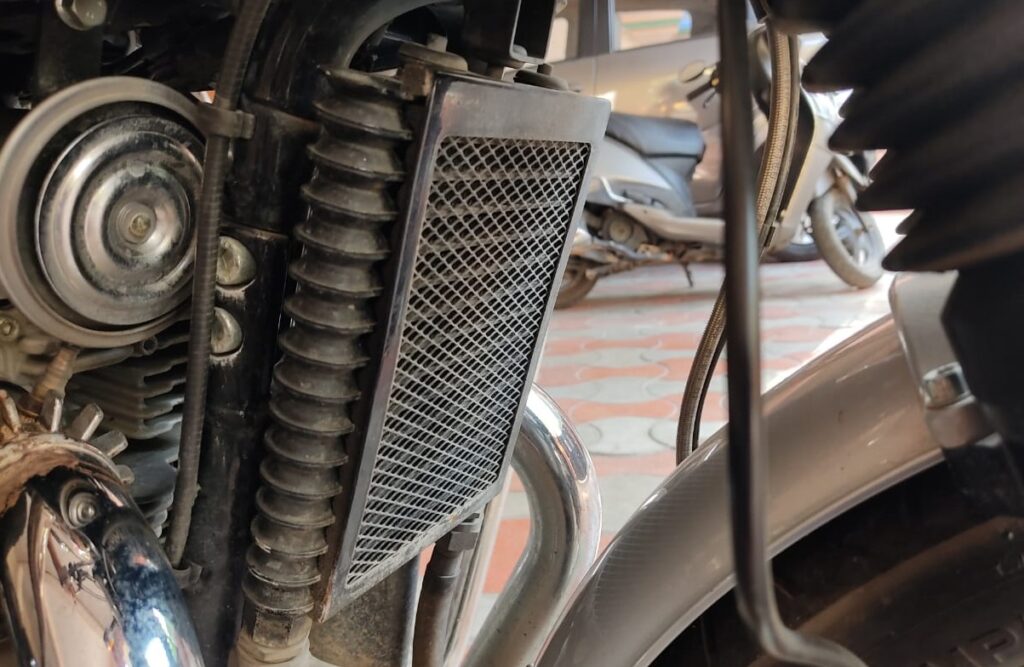
A liquid cooling system uses a liquid coolant circling through internal passages and channels built within the crankcase.
Cars use liquid cooling systems as well.
Although motorcycles and cars use different coolants, the working principle is the same. Even the coolants are mostly similar as well.
The liquid coolant absorbs the heat generated in the engine and goes to the radiator which cools down the fluid for it to recirculate back.
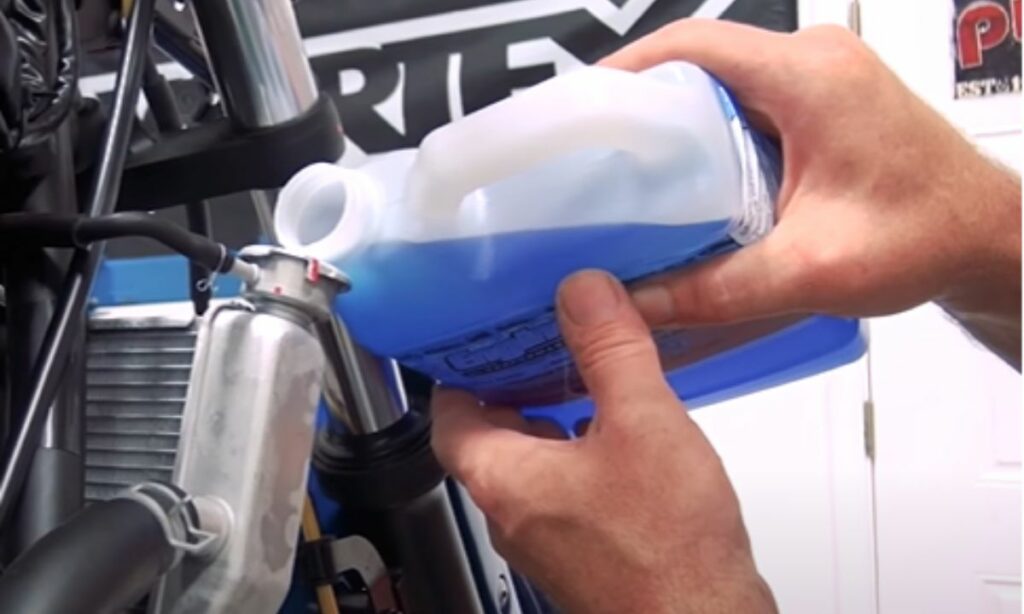
The radiator cools down the liquid coolant which has carried heat away from the engine to the radiator.
The coolant used in liquid cooling systems should have cooling, anti-corrosive, and anti-freezing properties. There are several coolants available out there in the market. However, it is always advised to use the one your motorcycle manufacturer has recommended.
Liquid cooling systems are more complicated when compared to air-cooled systems since they require radiators.
However, the complicated design is more than compensated by efficiency, low noise and vibrations, and improved performance.
Note: Even liquid-cooled motorcycle engines have fins on them. Although the coolant does the heavy lifting, fins contribute to the engine cooling as well.
Before you go…
Here are a few more posts about engine cooling in motorcycles:
